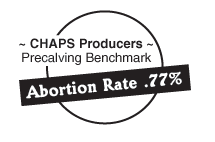



BeefTalk: Precalving Should Mean Contented Cows
By Kris Ringwall, Beef Specialist, NDSU Extension Service - The winter blues are behind us as we witness a taste of spring. Along the way, spring brings renewed energy and the desire to get ready for another year.
Cows are calving or very pregnant, so contentment is prevalent in the cowherd. Some would argue a cow is either pregnant or not, but there are very obvious levels of pregnancy, at least in this case, from a male perceptive.
Early on, at least to the male eye, there would be a lot of difficulty in visually determining who is pregnant and who isn’t. Even those who excel at palpation must admit that a cow can be misdiagnosed. For those who depend on ultrasound, a very spry calf could be hiding in the vast outreaches of an old, extended uterus.
Cows are heavily impacted as they approach the third trimester. While most cows handle pregnancy well, the final days before calving are not a time to add confounding factors. The better the environment, the more likely complications will not arise.
The ranch manager at the Dickinson Research Extension Center noted two cows had slipped their calves. There are few things more frustrating than to be feeding cows and then catching sight of the unsightly lump of a premature calf, usually frozen to the ground and no mother in sight. The cow simply left, leaving behind a hairless, alien-looking thing that one knows was a developing calf.
Life goes on. The sight is cleaned up to the extent possible.
The cow will show up open in the spring and be sold. Unfortunately, right now she has slipped back into the herd and is hidden by all the other increasingly pregnant cows that are contently chewing their morning cud.
Some would say the cow should be sorted off and separated, but some never really have tried to find a cow that has walked away from a calf and dissolved into the mass called a cow herd. Identifying a recently calved cow is difficult.
Of course, if the cow was sick, running a fever and off feed, she may stand out. However, in most cases, aborted or even early calves simply are dropped and left. Perhaps the cow looked back, but there is no guarantee.
In reality, there isn’t much we can do because some cows do abort, but keeping the abortion rate low is critical. For North Dakota Beef Cattle Improvement Association producers and those using the CHAPS management program, the precalving death loss, in other words abortions, is at 0.77 percent.
The figure is kept low by having excellent prebreeding vaccination programs, good health protocols within the herd and quickly removing and cleaning up aborted calves and membranes. However, cows still abort, so the remaining causes generally are environmental or the calf was deformed for some unknown reason.
The best preventative at this point in the life of a cow is good, tender, loving care, handling the cows carefully, moving them only when needed, carefully vaccinating for scours and not rushing anything.
Anther important item is to keep cows away from ice or other bad environments, such as hills and steep slopes, that may cause cows to slip. The prognosis of a cow down on the ice is dismal at best. Putting cows in hip slings is no fun and not very productive.
Last but not least is nutrition. Now would be a good time to evaluate nutritional plans with your nutritionist. The calf competes directly for space in the cow, so feeding quality is important. But all in all, precalving should mean contented cows.
March 2007


